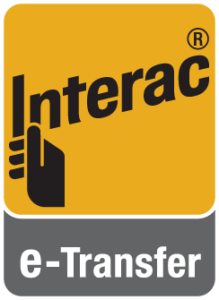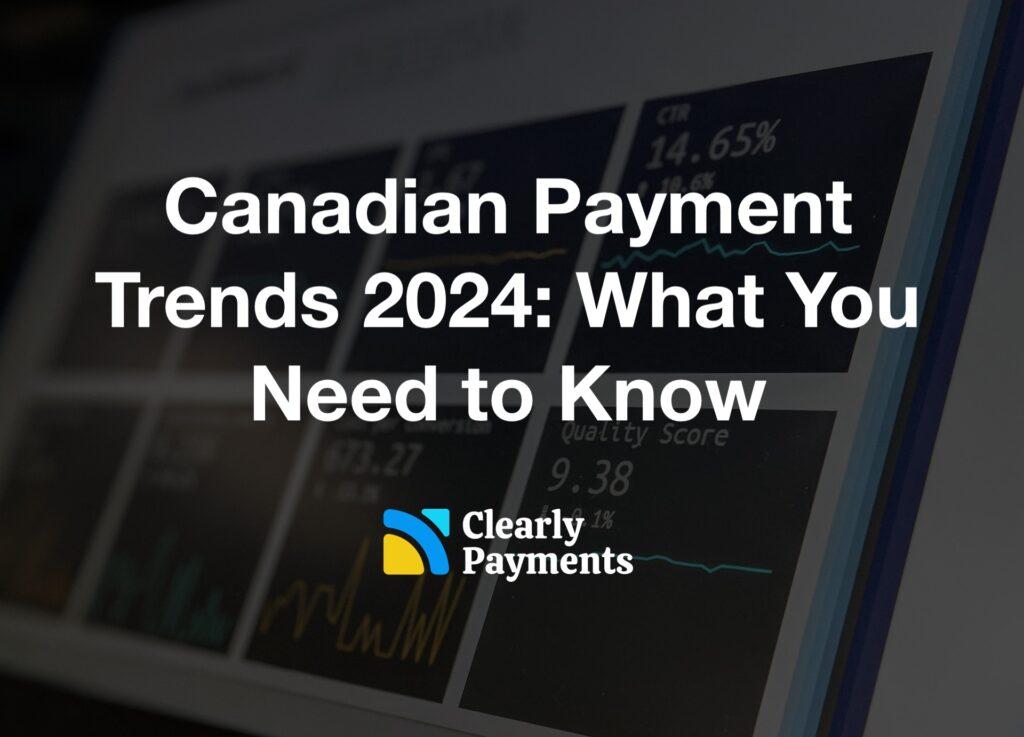As we move into 2024, the world of payment processing will continue to evolve and innovate. Fintech overall is ripe for disruption and is evolving quickly. This shift will last for the next decade bringing new opportunities for fintech companies to grow. Traditional financial institutions are not the only option anymore and people are increasingly more willing to trust smaller, more innovative players with their financial services.
In Canada, a nation celebrated for its rock solid banking and financial systems, which have consistently embraced pioneering technologies, the payment landscape stands as a testament to this ongoing commitment to progress.
This article covers the payment trends that are set to shape the Canadian payment industry throughout 2024 and beyond, offering a comprehensive overview to provide businesses and consumers with insight into the exciting developments that lie ahead. You can also look back and review our payment trends of 2023.
Contactless Payments Keeps Expanding in 2024
The continued surge in the popularity of contactless payments is not a new phenomenon, yet its momentum continues to grow steadily within Canada. With an unwavering emphasis on security, convenience, and hygiene, an increasing number of consumers are opting for the simplicity of “tap-to-pay” methods, utilizing credit and debit cards, smartphones, and wearable devices.
The year 2024 is anticipated to witness a surge in contactless payments, as the ease and swiftness of these transactions become even more deeply ingrained in the daily routines of Canadians. In response to this evolving consumer preference for touchless payments, businesses are upgrading their point-of-sale (POS) systems to ensure seamless integration, further showing Canada’s commitment to technological progress.
In 2023, 84% of merchants in Canada accept contactless debit or credit card payments, marking a substantial transition, especially following the COVID-19 pandemic. It is noteworthy that these merchants, by default, support Near Field Communication (NFC) payments like Google Pay and Apple Pay, underscoring Canada’s progressive stance in the realm of Point of Sale (POS) technology. Canada has consistently outpaced the United States in this regard, making contactless payments a prevailing norm. Today, virtually all payment terminals distributed by payment processors in Canada are equipped to support NFC and contactless payments.
The utilization of contactless payments will continue to transcend conventional retail scenarios and extend to various other mobile and remote payment avenues, including public transportation, fuel stations, and mobile point-of-sale systems such as pop-up shops and farmers’ markets.
Digital Wallet Adoption Continues to Grow
Digital wallets, epitomized by renowned platforms such as Apple Pay, Google Pay, and Samsung Pay, have been steadily gaining prominence in Canada. These digital wallets offer enhanced security features and the capability to store multiple payment methods, making them the preferred choice for both online and in-store transactions.
Apple Pay is the most popular digital wallet with a market share taking 60% of transactions. The next largest is PayPal with 31% of the market, and then Google Pay with 30% of the market.
Apple Pay has emerged as the most popular digital wallet, capturing 60% of transactions, followed by PayPal with 31%, and Google Pay with 30%. The Canadian digital wallet and mobile payments market is poised to experience a compound annual growth rate (CAGR) of 13.28% from 2022 to 2027. The rapid adoption of mobile payment systems is attributable to growing internet usage and the exponential expansion of online shopping. Of course, digital wallet technology is built on the foundation of contactless payments which is also growing significantly.
In a move aimed at promoting the usage of digital wallets and contactless payments, credit card issuers (i.e. issuing banks) in Canada increased the transaction limits from $100 to $250 in 2021. In 2024, the continued rise of digital wallet solutions is expected, driven by their convenience and the additional layer of security they afford in an era where data protection takes precedence.
eTransfer Grows as a Payment Method


The growth of eTransfer’s adoption can be attributed to progressive changes in transfer limits, evolving from an initial maximum limit of $100 to a current average of $3,000 per transfer for consumers and $20,000 for businesses. With a nominal transaction cost of $1, eTransfers remain cost-effective, particularly as transaction sizes escalate.
eTransfer is primarily used for consumer-to-consumer transactions and business-to-business transactions. It has not become nor is predicted to become a popular payment method for consumer-to-business transactions (i.e. retail) within 2024.
Canada will continue to see sustained growth in eTransfer’s popularity, overshadowing the traditional methods like cash and checks which are declining. It is estimated that eTransfer will encompass 50% of all non-cash payments in Canada by 2025.
The eTransfer service currently has an average transaction size of $400 and a user demographic dominated by Millennials (ages 27 to 42) and Gen Z (ages 11 to 26). While eTransfer is commonly used for peer-to-peer transactions, eTransfer also serves as a reliable method for payments to businesses and government entities.
The trajectory suggests that eTransfer is not just a trend but a transformative force shaping the future of financial transactions in Canada. For typical Canadian retail merchants, eTransfer will not likely grow too quickly throughout 2024 as consumers still prefer the use of credit cards and debit cards over eTransfer for purchases.
The Integration of Cryptocurrency in Canada
The integration of cryptocurrencies, such as Bitcoin and Ethereum, into the Canadian payment landscape is a dynamic and evolving process. There is a growing anticipation that the regulatory framework governing cryptocurrencies will evolve, bolstering confidence in their utilization by both consumers and businesses. As we transition into 2024, an increasing number of businesses are poised to venture into the realm of accepting cryptocurrencies as a form of payment due to increasing regulation. However, cryptocurrency will continue to stay nascent throughout 2024 as a form of payment.


Canada’s primary banking regulator, the Office of the Superintendent of Financial Institutions (OSFI), has initiated a consultation process with the nation’s banks for 2024. This step aims to refine forthcoming regulations concerning the reporting of cryptocurrency exposures. As digital currency becomes more regulated, it will become more trusted and used by financial institutions and society.
An interesting development in the USA that emerged in the regulatory front is the growing pressure from Republicans in Congress on the Securities and Exchange Commission (SEC) to grant approval for the first-ever Bitcoin spot exchange-traded funds (ETFs). However, the SEC opted to defer its decision on ETF proposals from prominent entities like BlackRock, Fidelity, and others until January 2024. This delay has garnered significant attention, especially in the wake of the SEC’s announcement in late September 2023, extending the delay to Jan. 10, 2024.
The prevailing expectation is leaning toward the approval of Bitcoin ETFs, which could potentially trigger positive movements in the broader cryptocurrency landscape. Such a development holds the promise of increasing the widespread acceptance of cryptocurrencies as a legitimate and functional method of payment. As we move forward, the role of cryptocurrencies in the Canadian payment ecosystem is set to evolve, potentially shaping the future of financial transactions.
The Continued Open Banking Initiative in Canada
Canada has been working on open banking initiatives, a forward-thinking endeavor designed to empower consumers with greater control over their financial data and make apps more sophisticated and easier to use. However, this initiative has been moving slowly. It has been moving so slowly that the fintech community has been calling on Canada to speed things up.
In the year 2024, open banking is poised to take some strides forward. This development holds the promise of unleashing a wave of innovative payment solutions that are set to reshape the financial landscape.
However, the financial sector in 2024 faces a multifaceted economic backdrop, characterized by a global economy that is slowing down. This will bring challenges to the banking industry, which is experiencing a paradigm shift brought about by various disruptive forces. Notable drivers of this transformation include rising interest rates, shrinking money supply, assertive regulatory measures, concerns related to climate change, and geopolitical tensions. These factors collectively underscore the critical need for financial institutions to adapt and evolve.
Amid this evolving financial and geopolitical landscape, the speed of innovative and new technologies is increasing pressure on banks. For example, both Artificial Intelligence (AI) and digital currencies are forcing banks to evolve and adapt their operations.
Open banking, with its potential to revolutionize the financial industry, remains a promising avenue for the future. Yet, it is prudent to acknowledge that the turbulent forces sweeping through the financial sector may distract the pace of progress in open banking during 2024. The prediction is that open banking will evolve, but not fully commercialize in 2024.
Growth of "Buy Now, Pay Later" (BNPL) Services
The “Buy Now, Pay Later” (BNPL) phenomenon is gaining notable traction in Canada, offering consumers the flexibility to make purchases and settle payments in installments. This trend is particularly appealing for high-value transactions, offering greater financial flexibility to shoppers. In 2024, the BNPL services sector is projected to witness continued growth as more businesses establish partnerships with these platforms to provide flexible payment alternatives.
Among Canadian merchants, a survey indicated that 34% are aware of BNPL services, with 8% having utilized at least one BNPL service. In 2022, BNPL constituted approximately 6% of all eCommerce payment methods in Canada, representing a twofold increase compared to the previous year.
The growth of BNPL services is built on the growth of eCommerce. As eCommerce grows, more consumers will be exposed to the option of BNPL. These services will also be automatically integrated into eCommerce platforms, content management plugins, and payment processors.
While certain challenges exist, such as higher interest rates associated with BNPL, many retailers are willing to subsidize these rates to entice consumers. Regardless, BNPL stands as a convenient payment option and is poised for continued growth in 2024.
Final Thoughts on 2024 Payment Trends
In 2024, the Canadian payment landscape is set to be a lively arena offering both opportunities and challenges for businesses and consumers. As change becomes the norm, thriving in this evolving ecosystem requires staying informed and adaptable.
Here are some simple yet essential takeaways for businesses navigating the payment trends of 2024:
Prioritize Digital Payments: Invest in a multi-channel payment strategy, incorporating major digital payment providers. This ensures convenience for customers with diverse preferences.
-
Embrace Security and Innovation: Stay vigilant about data security and fraud prevention. Explore innovative payment solutions like contactless payments, mobile wallets, and real-time platforms to enhance customer trust and experience.
-
Stay Informed and Adapt: Keep a close eye on evolving payment trends and regulations. Be flexible and ready to adjust your payment strategy based on market demands and valuable customer feedback.




